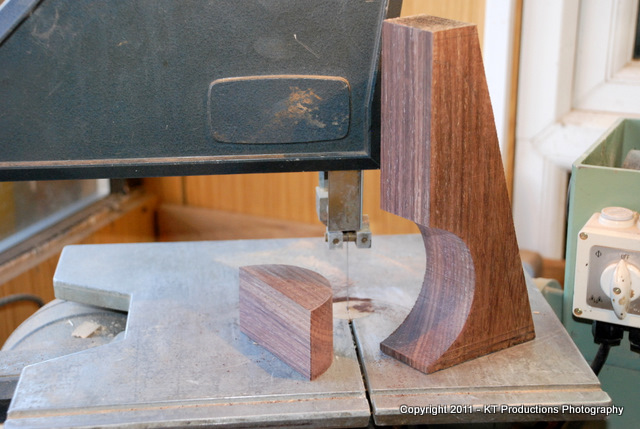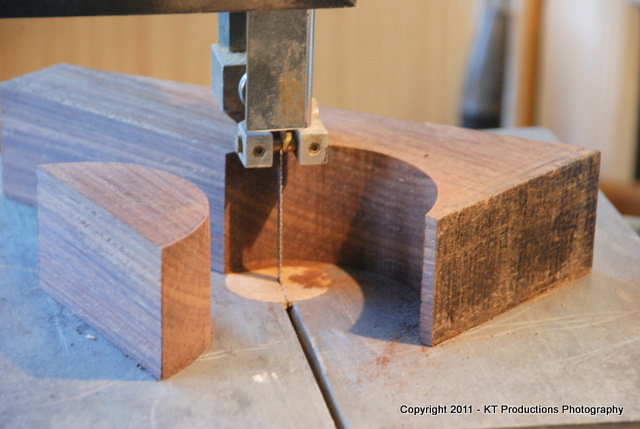Since I always listen carefully to what you guys have to say, I decided that some safety improvements to my home-made table saw were overdue. Here's what I have added as a result of your comments (except the short fence, which I was already using).
This is the riving knife I made from 2mm mild steel. I was advised in another thread that tool steel would have been a better choice, and I agree, but this is what I had to hand. This seems to work OK, probably because this is only a small saw, so any pressure tending to deflect the knife is exerted no more than a few inches from where the riving knife is clamped below the table, and the pressures aren't great with the sort of cuts I make.
Next, an NVR switch (this will serve my new router table too, which can be mounted instead of the saw table).
The crown guard isn't clamped to the RK (which only rises to the apex of the blade, not above) but is linked indirectly to the fence. The transparent part of the guard is a bit messy - my first attempt at weld-gluing plastic - but quite solid. I think it will protect me from many accidental contacts with the blade, and from a lot of flying debris.
Finally, the detachable short fence (inspired by Steve Maskery's design, but much more primitive).
The one thing I haven't addressed is improving dust extraction. I just don't have the space or power for a proper system in my loft workshop. Most of the debris seems to end up in the collector box fitted under the saw, and for the rest I rely on a half-face mask. Not ideal, but at my age I'll probably snuff it from something else before the residual dust gets me!
All in all, I think this is now a safer saw, although still not as flexible as real table saw. I hope also it adds some weight to my thesis that a home made table saw isn't
intrinsically an unsafe tool.
Chris










































